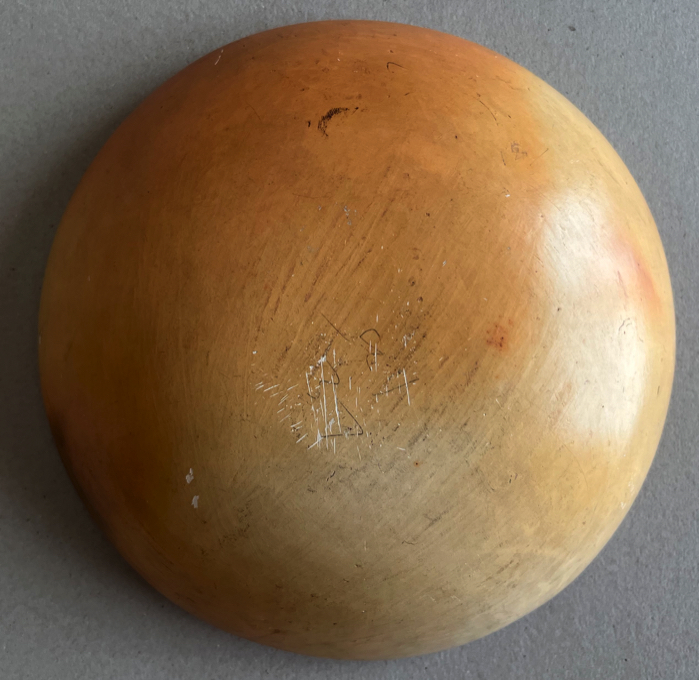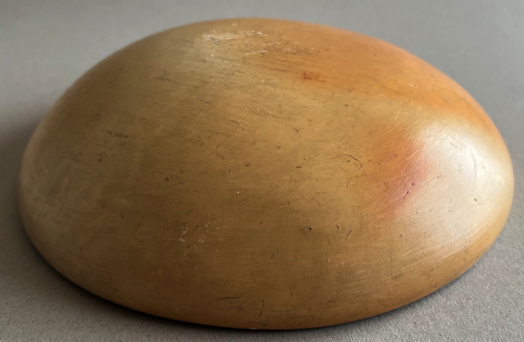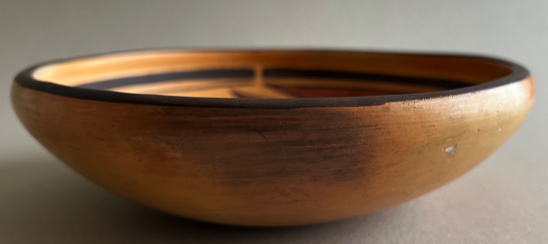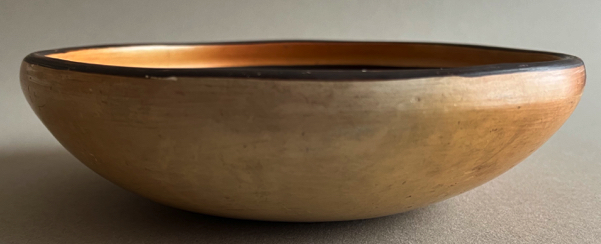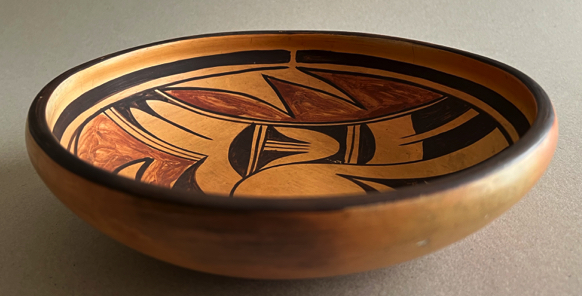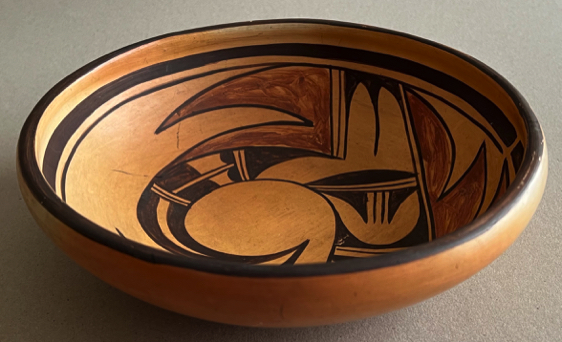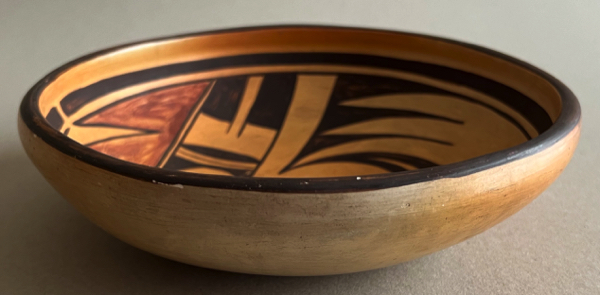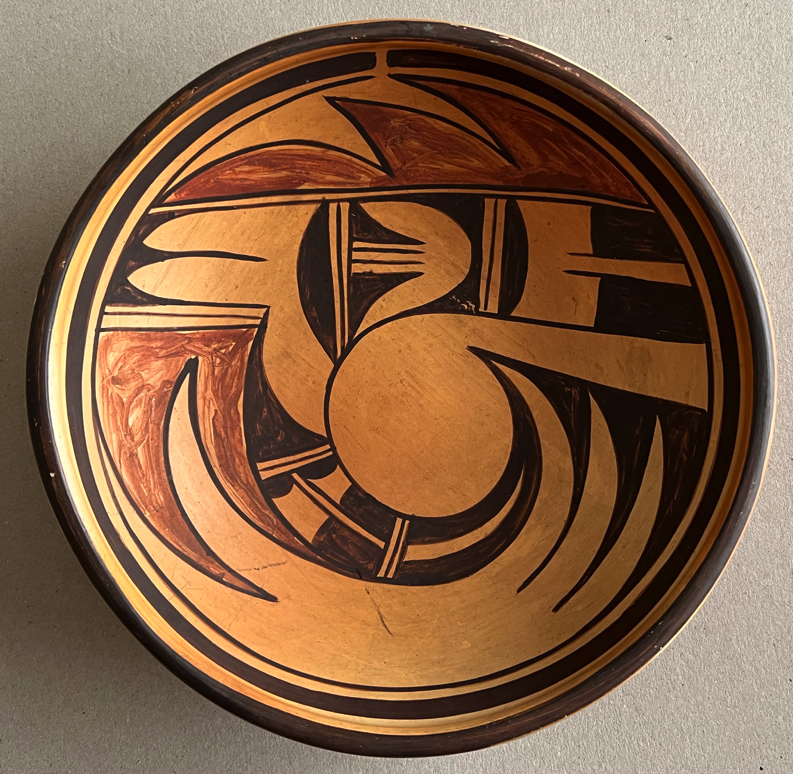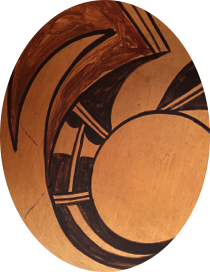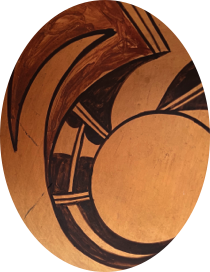
© 2010-2022 by Fine Arts of the Southwest, Inc. All rights reserved.
Unauthorized reproduction or use is strictly prohibited by law.
A beautiful historic Hopi polychrome pottery
bowl attributed to Fannie Polacca Nampeyo and possibly also to Nampeyo of Hano, c. 1920’s
This lovely bowl in our opinions is most likely the work of Fannie Polacca Nampeyo (1900-1986), possibly working
in conjunction with her famous Mother, Nampeyo, who might have formed the vessel before Fannie painted it. Fannie Polacca Nampeyo was the youngest daughter of renowned Hopi pottery Matriarch Nampeyo of Hano (1858-1942). Fannie didn’t begin signing her work until the mid-1930’s and Nampeyo never signed hers, but this bowl bears a number of the “signatures” of Fannie's, of her Mother's and of her family's pottery work; outstanding potting and vessel forming, bold graphic design with a two-thirds to one-thirds horizontal hemispheric design field division with excellent use of negative and positive space, rich boldly rendered polychrome painting and exceptional overall stone polishing. The design of swirling stylized feather motifs is rendered in the bold confident painting style characteristic of Fannie’s work with deep rich black paint and the somewhat streaky red paint typically used by her Mother Nampeyo and her older sister Annie.
The design has great overall dynamism, a remarkable strong sense of energy and motion. In the center of the design is a so-called “Kilroy or “Clown” face, another typical Nampeyo family design motif. The bowl’s rim is painted black which is another of Fannie’s specific traits. The exterior of the bowl is undecorated. Nampeyo's eyesight faltered for periods around the time this bowl was made and it is very possible that she formed the bowl and then Fannie painted it. The telltale extra small coil of clay just under the bowl's rim and its exceptional potting and polishing point us in the direction of Nampeyo as possibly having formed the vessel. The bowl also shows the whitish-yellow firing clouds or "blushes" which are indicative of a high temperature firing with lignite coal, a Nampeyo specialty. Also, the hard thin-walled construction that "pings" nicely upon being lightly tapped with a finger.
The bowl measures 8 1/2” in diameter and is 2 1/4” in height. It is in excellent original condition, particularly in light of its century or so of age, with only a few minor abrasions and some slight scratches mainly on the bottom of the bowl. There are no cracks, no significant chips and a thorough examination under Ultraviolet light reveals no evidence of restoration or overpainting. The old penciled price of $1.25 on the bottom of the bowl likely applied by an Indian trader or Trading Post attests to its early age.
This beautiful Hopi bowl is both an accomplished piece of art and a fine historic artifact at the same time, a perfect meeting of tradition, culture and distinguished artistic family achievement.
Price $1,575
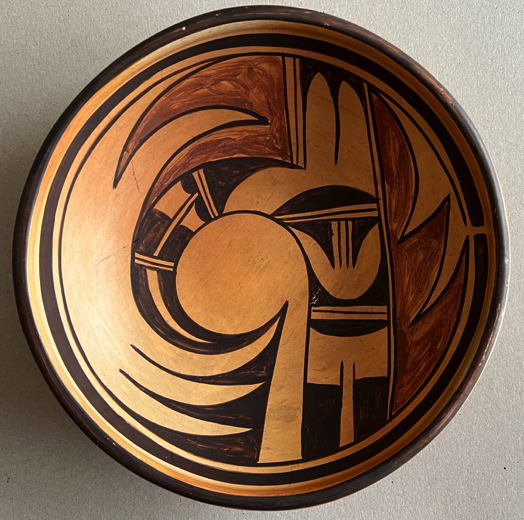
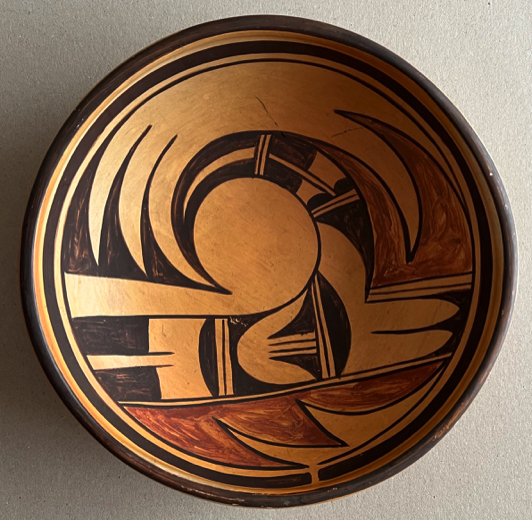
Fannie Nampeyo, at left working with her mother Nampeyo, at right, c. 1925
Photo source and © Frashers Fotos
